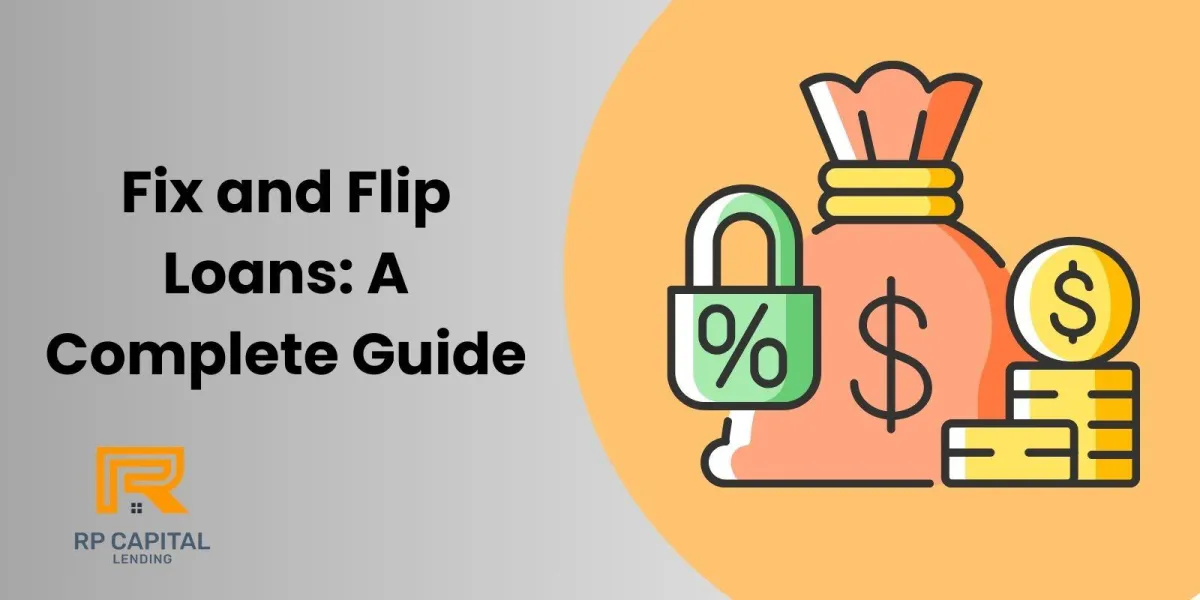Blog

Fix and Flip Loans: What They Are and How They Work
Are you a real estate investor eager to make quick profits by turning distressed properties into desirable homes?
Fix and Flip Loans could be your golden ticket. These specialized loans are designed to provide you with the capital needed to purchase, renovate, and sell properties at a profit—all within a short timeframe.
This comprehensive guide will dive deep into the world of Fix and Flip Loans, covering everything from the basics to the intricacies of securing one, so you can confidently navigate the fast-paced real estate market and achieve your investment goals.
What Are Fix and Flip Loans?
Fix and Flip Loans are short-term, asset-based loans that real estate investors use to purchase and renovate properties. Unlike traditional mortgages, these loans are designed for quick transactions, making them ideal for investors who aim to buy properties at a low price, invest in renovations, and sell them at a higher price—all within a short period.
How Fix and Flip Loans Differ from Traditional Loans?
1. Approval Process:
Traditional mortgages can take weeks or even months for approval, with extensive documentation and scrutiny of the borrower’s financial background, fix and flip loans on the other hand, are approved much faster, often within a few days, as the property itself acts as the primary collateral.
2. Loan Terms:
While traditional loans have terms of 15-30 years, Fix and Flip Loans are short-term, usually 6-18 months, aligning with the typical duration of a renovation project.
3. Interest Rates:
Due to their short-term nature and higher risk, Fix and Flip Loans often come with higher interest rates than traditional mortgages. However, the potential for a high return on investment (ROI) usually outweighs the cost.
Key Benefits of Fix and Flip Loans
1. Quick Access to Capital:
Time is often of the essence in real estate investing. Fix and Flip Loans offer quick approval and funding, enabling investors to move swiftly on property deals.
2. Flexible Financing Options:
Lenders specializing in Fix and Flip Loans often offer more flexible terms compared to traditional lenders. This flexibility can include higher loan-to-value (LTV) ratios, tailored repayment plans, and interest-only payment options.
3. Increased Profit Margins:
By financing both the purchase and renovation costs, Fix and Flip Loans allow investors to leverage their capital, increasing their potential profit margins on each deal.
4. No Prepayment Penalties:
Many Fix and Flip Loans come with no prepayment penalties, giving investors the freedom to repay the loan early if the property sells faster than anticipated.
The Fix and Flip Process: From Purchase to Profit
1. Identifying the Right Property
The success of a fix-and-flip project starts with finding the right property. Investors typically look for homes in need of significant repairs but located in desirable neighborhoods. The goal is to purchase the property at a low price, renovate it efficiently, and sell it at a competitive price.
2. Conducting a Thorough Property Analysis
Before making an offer, it's crucial to conduct a detailed analysis of the property's potential. This includes estimating the after-repair value (ARV), calculating the cost of repairs, and determining the expected profit margin. Tools like comparative market analysis (CMA) can help in assessing the property's value.
3. Securing a Fix and Flip Loan
Once a property is identified, the next step is securing financing. Investors should prepare a solid business plan to present to potential lenders, detailing the scope of renovations, expected costs, and projected ARV. The strength of this plan often determines the loan's approval and terms.
4. Managing the Renovation Process
Effective project management is key to a successful flip. This involves hiring reliable contractors, overseeing the renovation process, and staying within budget. Time management is equally important, as the longer the renovation takes, the more interest accrues on the loan.
5. Marketing and Selling the Property
After renovations are complete, the final step is selling the property. A well-executed marketing strategy, including professional staging and photography, can attract potential buyers quickly. The goal is to sell the property at the highest possible price, maximizing the return on investment.
How to Choose the Right Lender for a Fix and Flip Loan?
Selecting the right lender is a critical component of your fix-and-flip strategy. Here are some tips to help you make an informed decision:
1. Specialization:
Look for lenders who specialize in Fix and Flip Loans, as they will be more familiar with the unique needs of real estate investors.
2. Reputation:
Research the lender's reputation by reading reviews, asking for references, and speaking with other investors. A lender with a strong track record is more likely to offer favorable terms.
3. Loan Terms:
Compare loan terms across multiple lenders, including interest rates, LTV ratios, fees, and repayment options. Choose a lender whose terms align with your investment strategy.
4. Customer Service:
A responsive and knowledgeable lender can make the loan process smoother, especially if unexpected issues arise during the project.
Tips for Maximizing Profits with Fix and Flip Loans
1. Accurate Budgeting:
Create a detailed budget that accounts for all costs, including purchase price, renovation expenses, holding costs, and unexpected contingencies. Sticking to this budget is crucial for maintaining profitability.
2. Timely Renovations:
Delays in renovations can eat into profits. Ensure that contractors adhere to timelines, and be proactive in addressing any issues that may cause delays.
3. Quality Renovations:
While it's important to stay within budget, cutting corners on renovations can result in a lower selling price. Focus on quality upgrades that add significant value to the property.
4. Market Savvy:
Stay informed about market trends and adjust your strategy accordingly. For example, if the market is cooling down, you may need to adjust your pricing or marketing approach to attract buyers.
Frequently Asked Questions (FAQs)
1. What credit score is needed to qualify for a Fix and Flip Loan?
While credit score requirements vary by lender, most Fix and Flip Loans are available to borrowers with credit scores as low as 600. However, a higher credit score can result in better loan terms.
2. How much can I borrow with a Fix and Flip Loan?
Lenders typically offer loans covering 80% to 90% of the property's purchase price and 100% of renovation costs. The total amount you can borrow will depend on the property's projected after-repair value (ARV).
3. What is the typical term length for a Fix and Flip Loan?
Fix and Flip Loans are usually short-term, with terms ranging from 6 to 18 months. This allows investors to complete renovations and sell the property within a tight timeframe.
4. Can I use a Fix and Flip Loan for multiple properties?
Yes, some lenders offer Fix and Flip Loans that can be used for multiple properties simultaneously, either through separate loans or a blanket loan that covers multiple projects.
5. What happens if I can't sell the property before the loan term ends?
If you're unable to sell the property before the loan term ends, you have a few options: refinance the loan into a longer-term mortgage, negotiate an extension with your lender, or pay off the loan using other funds.
Conclusion
Fix and Flip Loans are a powerful tool for real estate investors looking to capitalize on opportunities in the market. With the ability to finance both the purchase and renovation of a property, these loans can significantly boost your profit margins.
However, success with Fix and Flip Loans requires careful planning, strategic property selection, and effective project management. By following the guidance provided in this comprehensive guide, you'll be well-equipped to navigate the fix-and-flip process and achieve your investment goals.
Whether you're a seasoned investor or new to the real estate market, understanding how to leverage Fix and Flip Loans can give you the edge you need to succeed in this competitive industry.
Also Read:
RP Capital Lending is a d.b.a of RP Capital Partners Inc (NMLS # 2469193) | Privacy Policy
Copyright © 2022. All Rights Reserved.
Disclaimer: Loans only apply to non-owner occupied properties. Rates, terms and conditions offered only to qualified borrowers, may vary upon loan product, deal structure, other applicable considerations, and are subject to change at any time without notice.

